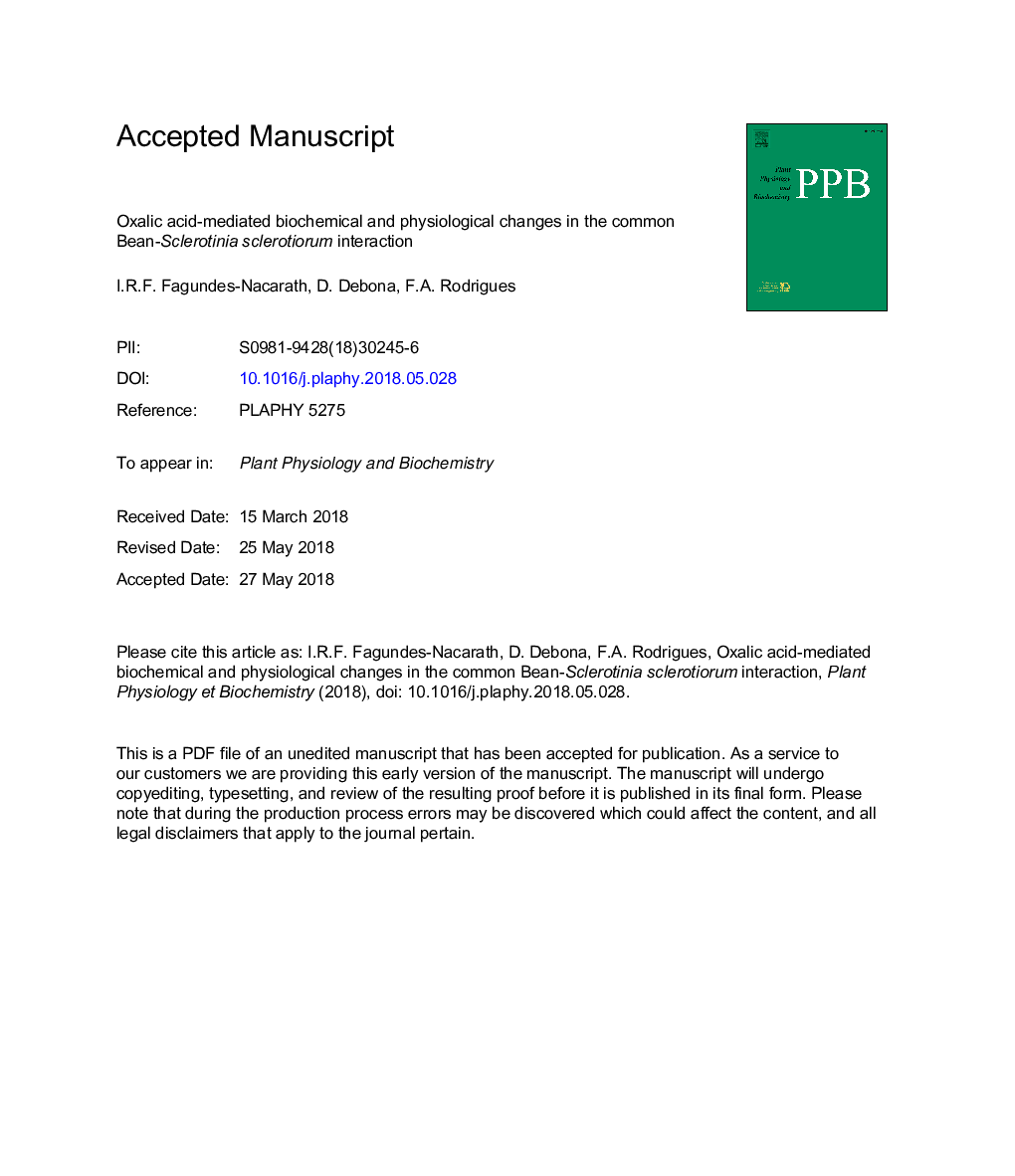| کد مقاله | کد نشریه | سال انتشار | مقاله انگلیسی | نسخه تمام متن |
|---|---|---|---|---|
| 8352760 | 1541892 | 2018 | 44 صفحه PDF | دانلود رایگان |
عنوان انگلیسی مقاله ISI
Oxalic acid-mediated biochemical and physiological changes in the common bean-Sclerotinia sclerotiorum interaction
ترجمه فارسی عنوان
تغییرات بیوشیمیایی و فیزیولوژیک اسید اسکالیک در اثر متقابل لوبیا و اسکلروتینای اسکلروتوریوم
دانلود مقاله + سفارش ترجمه
دانلود مقاله ISI انگلیسی
رایگان برای ایرانیان
کلمات کلیدی
موضوعات مرتبط
علوم زیستی و بیوفناوری
علوم کشاورزی و بیولوژیک
دانش گیاه شناسی
چکیده انگلیسی
The success of Sclerotinia sclerotiorum infection relies mainly on the production of the non-host selective toxin named oxalic acid (OA). This toxin is known to play multiple roles in a host infected by the fungus, but its effect on photosynthesis and the antioxidant system of common bean plants remain elusive. Therefore, we performed detailed analysis of leaf gas exchange, chlorophyll a fluorescence, activities of antioxidant enzymes, concentrations of reactive oxygen species and photosynthetic pigments to investigate the OA's role during the S. sclerotiorum pathogenesis. To achieve this goal, common bean plants were sprayed with water or with oxalic acid (referred to as -OA and +OA plants, respectively) and either non-challenged or challenged with a wild-type (WT) or an OA-defective mutant (A4) of S. sclerotiorum. Irrespective of OA spray, the WT isolate was more aggressive than the A4 isolate and spraying OA increased OA concentration in the leaflets as well as the aggressiveness of both isolates. Biochemical limitations were behind S. sclerotiorum-induced photosynthetic impairments notably for the +OA plants inoculated with the WT isolate. Inoculated plants were not able to fully capture and exploit the collected energy due to the degradation of photosynthetic pigments. Photoinhibition of photosynthesis and photochemical dysfunctions were potentiated by OA. Higher activities of superoxide dismutase, peroxidase and ascorbate peroxidase besides reductions on catalase activity were noticed for plants inoculated with the WT isolate. OA was able to counteract most of the increases in the activities of antioxidant enzymes thereby increasing the generation of superoxide and hydrogen peroxide and the concurrent damage to the membranes of host cells as evidenced by the high malondialdehyde concentration. In conclusion, OA was found to enhance biochemical limitations to photosynthesis, photochemical dysfunctions and oxidative stress in the leaflets of common bean plants infected by S. sclerotiorum.
ناشر
Database: Elsevier - ScienceDirect (ساینس دایرکت)
Journal: Plant Physiology and Biochemistry - Volume 129, August 2018, Pages 109-121
Journal: Plant Physiology and Biochemistry - Volume 129, August 2018, Pages 109-121
نویسندگان
I.R.F. Fagundes-Nacarath, D. Debona, F.A. Rodrigues,
